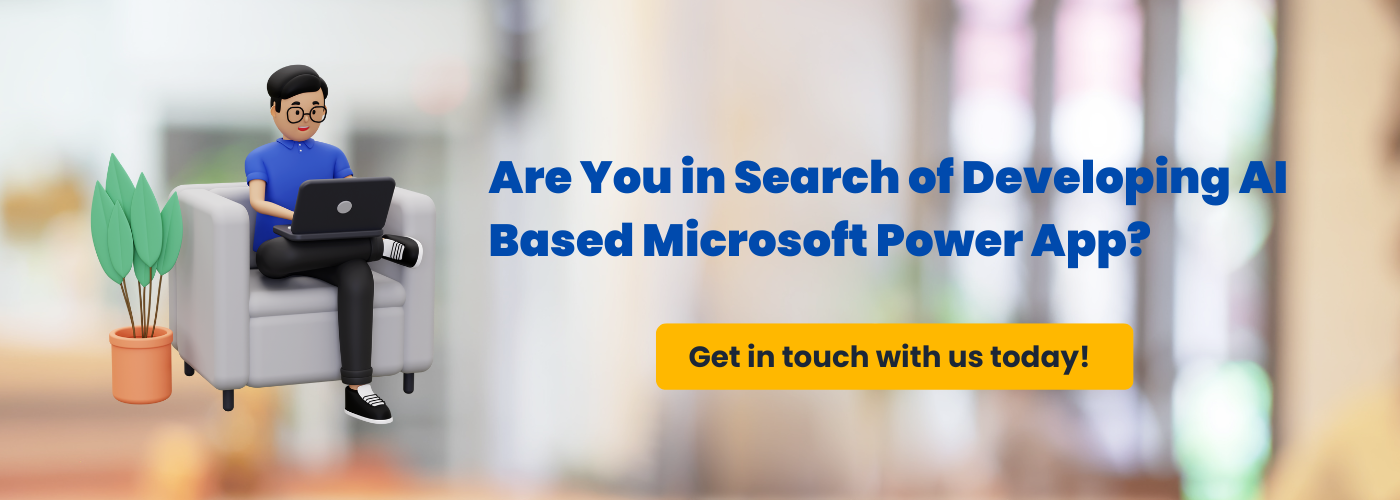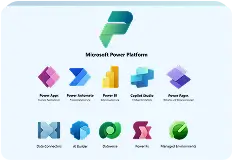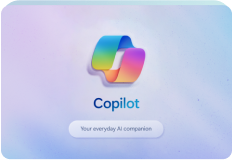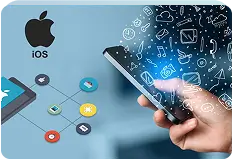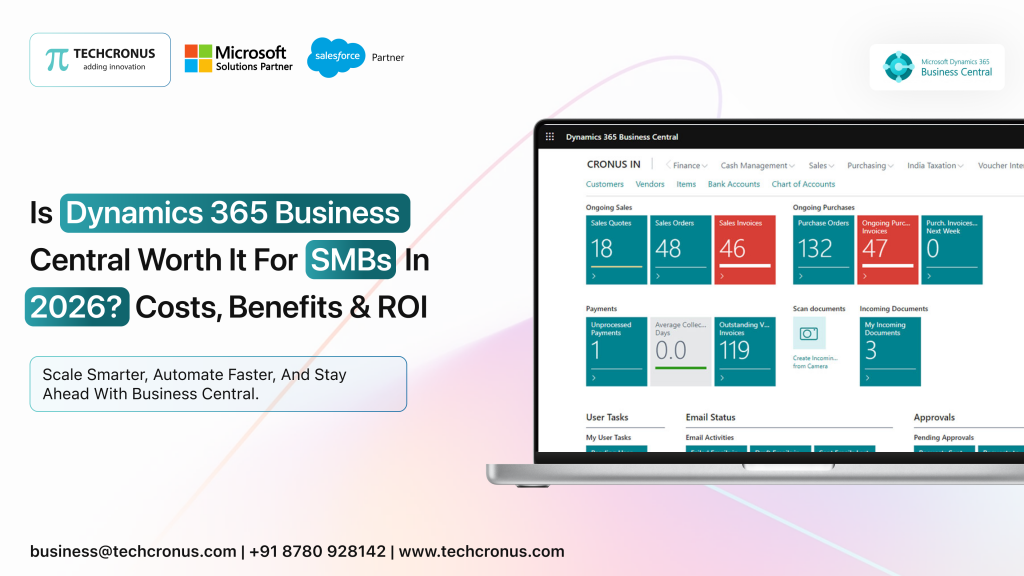Table of Contents
Businesses are looking for ways to streamline procedures and increase efficiency in the digital age. One of the most effective ways to accomplish this is to implement technology solutions that help automate procedures and improve communication. Microsoft Power Platform, which can be used to build unique business apps, automate operations, and analyze data, is one such product that has recently grown in popularity. Microsoft Power Automate consulting services have made significant progress towards improving its communication capabilities by integrating ChatGPT.
Defining ChatGPT
ChatGPT is an advanced language model developed by OpenAI, specifically the GPT-3.5 architecture. It is designed to engage in natural language conversations and provide responses based on its training on a diverse range of internet text. With its deep understanding of language patterns and context, ChatGPT can generate coherent and contextually relevant replies. It can assist users with a wide range of queries, offer explanations, provide creative suggestions, and engage in interactive conversations on various topics.
How Microsoft Power Platform Integrates ChatGPT?
Microsoft Power Platform integrates ChatGPT through the use of Power Virtual Agents. Power Virtual Agents is a part of the Power Platform suite, which allows users to create and deploy chatbots without any coding or AI expertise. By leveraging the capabilities of ChatGPT, Power Virtual Agents enables users to build powerful conversational experiences.
With Power Virtual Agents, users can define the conversation flow, design the chatbot’s interface, and train the bot using a graphical interface. The integration with ChatGPT allows the chatbot to understand and respond to user queries using natural language processing. It can handle complex questions, provide recommendations, and offer personalized responses based on the training it has received.
The integration of ChatGPT with Power Platform brings several benefits. First, it democratizes the creation of chatbots by making it accessible to users without extensive programming knowledge. This empowers businesses to quickly develop and deploy conversational AI solutions. Second, ChatGPT enhances the chatbot’s ability to understand and generate human-like responses, improving the overall user experience. It can provide accurate and relevant information, assist with tasks, and offer a more conversational and engaging interaction.
Furthermore, by integrating with the broader Microsoft ecosystem, the Power Platform allows seamless connectivity with other Microsoft tools and services. This enables organizations to integrate the chatbot into their existing workflows, systems, and applications. They can leverage the power of ChatGPT to enhance customer support, automate processes, and drive better user engagement.
In summary, Microsoft Power Platform integrates ChatGPT through Power Virtual Agents, enabling users to create chatbots that can understand and respond to user queries using natural language processing. This integration democratizes the creation of chatbots, improves user experiences, and offers seamless connectivity with other Microsoft tools and services.
Powers of Generative AI
Giving generative AI capabilities to Power Platform apps and AI Builder is a logical next step, According to Kashyap Kompella, CEO of RPA2AI Research, integrating generative AI capabilities into Power Platform apps and AI Builder is a logical progression, particularly in light of Microsoft’s collaboration with OpenAI Chat GPT App Development and substantial investment in OpenAI. Kompella emphasizes that ChatGPT, with its powerful language model and chatbot capabilities, has significantly elevated expectations for enterprise bots.
Kompella further highlights the advantages of incorporating GPT-based bots trained on a company’s documents into customer service operations. This approach allows for easier integration of new information and knowledge into the bots, enabling them to provide more accurate and up-to-date responses.
Moreover, leveraging GPT-based text generation can enhance employee productivity. Tasks like summarizing, rewriting, and reformatting can be automated, saving valuable time and enabling staff to focus on more strategic or complex responsibilities.
Kompella envisions a future where every individual can have their own AI assistant, merging conversational interfaces with powerful language model AI applications. This personalized AI assistant would aid users in being more effective and efficient in their work.
Additionally, Kompella suggests that businesses can use conversation boosters to create responses for chatbots based on the most useful and up-to-date data sources, even for topics they have not been explicitly trained on. This approach allows chatbots to provide relevant and accurate information, enhancing their capabilities and improving customer experiences.
integrating generative AI capabilities, such as those offered by ChatGPT, into Power Platform apps and AI Builder holds significant potential for enhancing customer service, improving employee productivity, and delivering more personalized and effective AI-driven solutions.
Pros and Cons of Generating ChatGPT with Microsoft Power Platform
Pros:
User-Friendly Development:
Microsoft Power Platform provides a low-code or no-code development environment, making it accessible to users without extensive programming knowledge. This simplifies the process of generating ChatGPT models and enables a broader range of individuals to create and deploy chatbots.
Integration with Microsoft Ecosystem:
Power Platform seamlessly integrates with other Microsoft tools and services, allowing easy connection with existing workflows, data sources, and applications. This integration enhances the capabilities of ChatGPT by leveraging the strengths of the Microsoft ecosystem.
Rapid Deployment:
Power Platform enables quick development and deployment of chatbots. It provides a visual interface for designing conversational flows, training the model, and deploying the chatbot across various channels, reducing the time-to-market for AI-powered conversational agents.
AI-Driven Customer Support:
By generating ChatGPT with Power Platform, organizations can enhance their customer support capabilities. Chatbots can handle common customer queries, provide instant responses, and offer personalized recommendations, improving customer experiences and reducing the workload on human agents.
Cons:
Limited Customization:
While Power Platform simplifies chatbot development, it may have limitations in terms of customization compared to coding from scratch. Users might face constraints in fine-tuning the model’s behavior or incorporating specialized features that require advanced programming skills.
Training Data Limitations:
The performance of ChatGPT relies heavily on the quality and diversity of the training data. While Microsoft Power Platform allows users to train the model on specific data sources, the availability and suitability of training data may vary, potentially impacting the accuracy and relevance of the generated responses.
Dependency on Cloud Services:
Power Platform AI operates on cloud infrastructure, which means generating ChatGPT models and deploying chatbots require an internet connection and reliance on Microsoft’s cloud services. This dependency might introduce latency or accessibility issues if there are connectivity or service disruptions.
Ethical Considerations:
ChatGPT models, including those generated with Power Platform, require careful handling to address ethical concerns. Precautions must be taken to mitigate biases, ensure privacy and data security, and prevent misuse of the chatbot for malicious purposes.
What are the Benefits of Integrating ChatGPT with Microsoft Teams?
Streamlined Collaboration:
By integrating ChatGPT with Microsoft Teams, teams can collaborate seamlessly within the familiar Teams environment. Users can leverage the chatbot’s capabilities to communicate, exchange information, and work together on projects, enhancing overall collaboration and productivity.
Enhanced User Experience:
The integration of ChatGPT with Microsoft Teams and low-code development platforms offer a user-friendly experience. Users can interact with the chatbot using natural language, receive instant responses, and access relevant information, making their interactions more intuitive and efficient.
Rapid Development:
Low-code development platforms simplify the process of building chatbots and AI-powered applications by offering drag-and-drop functionality, pre-built components, and reusable templates. Integrating ChatGPT within these platforms allows for the rapid development and deployment of chatbots, reducing the time and effort required for implementation.
Contextual Understanding:
ChatGPT can be trained on specific documents, resources, or data sources relevant to an organization. When integrated with low-code development platforms, it enables the creation of contextually aware chatbots. These chatbots can provide tailored responses and recommendations, leveraging the knowledge and context specific to the organization.
Increased Accessibility:
Integrating ChatGPT with low-code development platforms makes AI capabilities more accessible to a broader range of users. Amateur coders or non-technical individuals can leverage the visual interface and simplified development process of low-code platforms to create chatbots and AI applications without extensive programming knowledge.
the integration of ChatGPT with both Microsoft Teams and low-code development platforms offers streamlined collaboration, enhanced user experience, rapid development, contextual understanding, and increased accessibility to AI capabilities. These benefits contribute to improved productivity, efficient communication, and the creation of intelligent and context-aware chatbots within the organization.
Consequences for the Low-Code Sector
The integration of AI technologies, such as ChatGPT, into the low-code sector has profound consequences for the industry. It expands the capabilities of low-code development platforms, allowing users to create more sophisticated and intelligent applications with advanced features like natural language processing and sentiment analysis. This opens up new possibilities for innovation and empowers non-technical users to leverage AI within their applications, democratizing AI development.
One significant consequence is the acceleration of development processes. AI integration in low-code platforms provides AI assistance, pre-built AI components, and auto-completion features, enabling developers to quickly incorporate advanced AI functionalities. This reduces development time and effort, leading to faster time-to-market and increased agility in responding to business needs.
However, integrating AI into the low-code sector also presents challenges. It requires developers to acquire a basic understanding of AI concepts and how to effectively leverage AI capabilities within their low-code applications. Bridging the skills gap and supporting developers in acquiring AI knowledge becomes crucial for successful AI integration.
Furthermore, ethical considerations arise with the widespread use of AI in low-code applications. Developers must address potential biases, privacy concerns, and fairness issues in AI models and data usage. Low-code platforms need to provide guidelines and resources to support developers in developing responsible and ethically sound AI applications.
In summary, the consequences of integrating AI technologies like ChatGPT into the low-code sector are significant. It expands the functionality of low-code platforms, accelerates development processes, and democratizes AI development, but also presents challenges related to skills acquisition and ethical considerations. Techcronus, it drives innovation and empowers developers to create intelligent applications with AI capabilities.
Conclusion
In conclusion, the integration of ChatGPT and AI capabilities into the low-code sector brings significant benefits in terms of expanded functionality, accelerated development, and democratized AI. However, it also poses challenges in terms of skills acquisition and ethical considerations. Despite these challenges, integration drives innovation, empowering developers to create intelligent applications and advancing the low-code industry. Overall, it opens up new possibilities and opportunities for users to leverage AI technologies in their development processes. Powerapps Development Company like Techcronus can truly develop Microsoft Power Apps without any hassle.
